RAILWAY SIGNALLING SWITCH & CROSSING COMPONENTS
SWITCHES & CROSSINGS
- Commonly known as S&C
- Defined as track components that exist to provide a means whereby trains may be directed from one track or route to another track or route.
- Consist of: one (or more) sets of switches
common (or acute) crossing and (sometimes) obtuse crossings
TURNOUTS
COMMON (or ACUTE) CROSSING – where ‘turnout’ rail and ‘through’ rail intersect.
SWITCHES (or points) – where divergence between alternative routes begin.
DIAMOND CROSSINGS
* 2 x COMMON CROSSINGS
* 2 x OBTUSE CROSSINGS
SLIP DIAMOND CROSSINGS
SETS OF SWITCHES WITHIN THE DIAMOND TO ALLOW TRAINS TO ACCESS ADDITIONAL PATHWAYS.
SLIP DIAMONDS CAN BE OF A SINGLE OR DOUBLE VARIETY.
DESCRIPTION
- Denoted by LETTER to indicate planing
- V after letter indicates a VERTICAL configuration
- Types: A … 2.9m PLANING LENGTH
B … 3.5m
C … 4.25m
D … 5.2m
E … 7.0m
F … 8.55m
G … 11.6m
H … 17.495m
GRAPHITE LUBRICANT INSERTS IN A COPPER-TIN ALLOY MATRIX (Hence the CuSn prefix)
Mandatory requirement at switch toe to tie the stock rails to the req’d gauge. Gauge stops are welded to locate the slide baseplate
NOTE : SHALLOW-DEPTH SWITCHES
COMMON CROSSINGS (BUILT-UP UNITS) COMPRISE:
DESCRIPTION:
DENOTED BY CROSSING ANGLE i.e. 1 in xx
COMMON ANGLES IN USE :
1 in 8
1 in 91/4
1 in 10
1 in 103/4
1 in 131/4
1 in 15
1 in 18
1 in 21
1 in 24
1 in 28
1 in 32
DESIGN OF SWITCHES & CROSSINGS
NR60 S&C
- Flat bottom, inclined shallow depth designs of S&C
- Designed for use in tracks carrying high speeds or heavy tonnages
- Units are strengthened for use with C.W.R.
- NR60 C-8.25 turnout with concrete bearers
Note that TWO back-drives are fitted with the shallow depth switches
NR60 S&C with ‘TORSION’ type drive bar (down centre of fourfoot)
This system is a variation of the drive system shown on the preceding slide
NR60 transition rail
Provided at the back of the switches to allow transfer from E1 to 113A rail sections
Note the ‘piggy back’ fastening pad to provide connection for the shallower-depth rail.
BALL and CLAW
Fitted to any NR60 layout using switches SHARPER than an F design
Minimises longitudinal creep of the switch rails and provides a useful ‘tell-tail’ for monitoring the position of the switches.
Note : the ball and claw does NOT provide for any stress transference between switch and stock rails.
33 C 1 CHECK RAILS
Continental style check rails
Are being increasingly used in S&C layouts
The design enabled the full width of the 113a rail foot to be retained for increased stability.
33 C 1 Check rail bracket baseplate
33 C 1 Check rail bracket baseplate
The design allows for the insertion of shims between the vertical face of the back of he check to compensate for wear on the rubbing face of the check.
NR60 1 in 13.5 SWING NOSE CROSSING
Comprises an electro-slag welded moveable nose within 60 E 1 wing rails
Note the use of hollow steel bearers at the nose and heel of the crossing.
NR60 1 in 13.5 SWING NOSE CROSSING HEEL FLEXING JOINT
A mitred joint to allow for the movement of the crossing

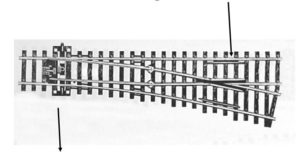
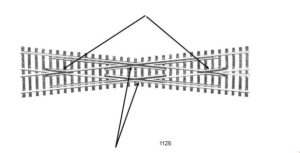
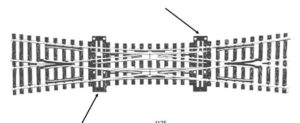
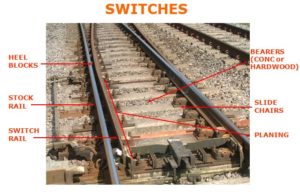
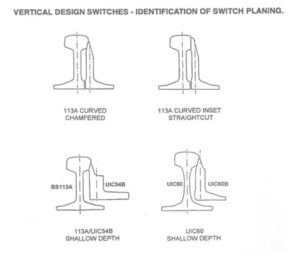
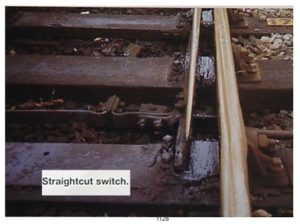
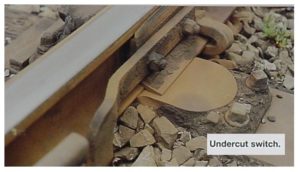
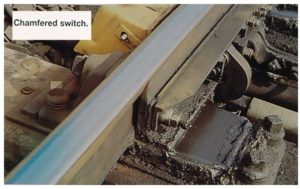
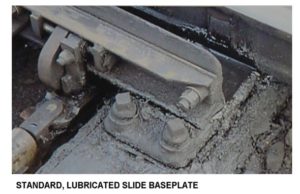
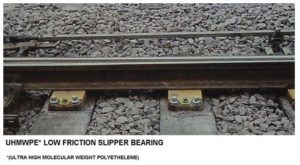
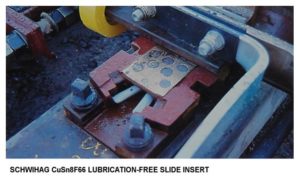
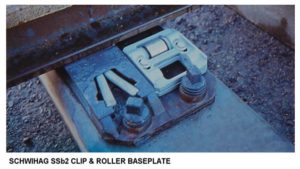
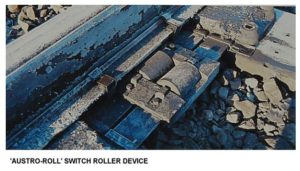
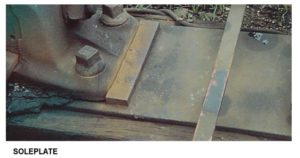
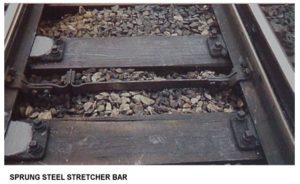
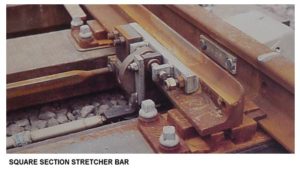
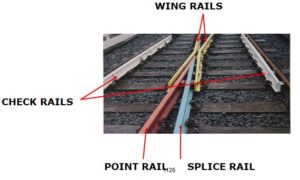
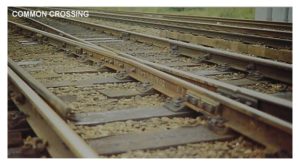
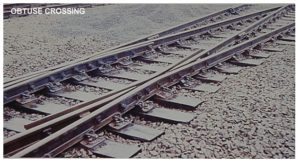
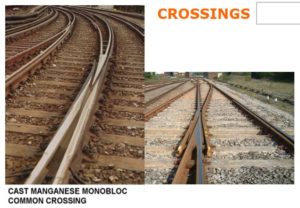
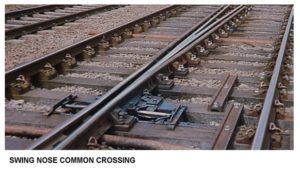
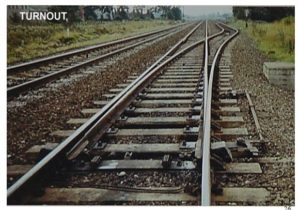
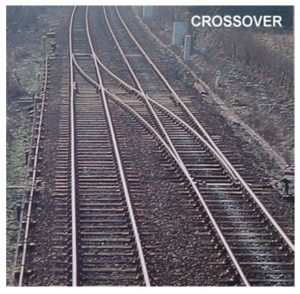
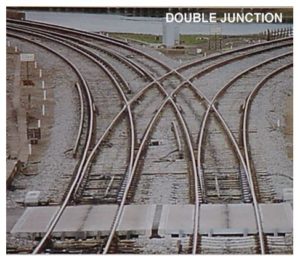
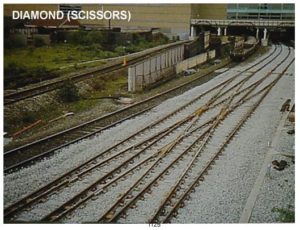
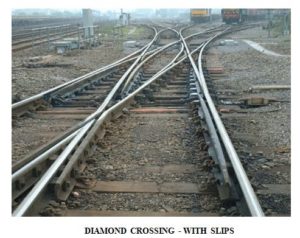
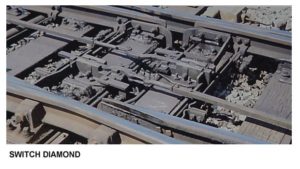
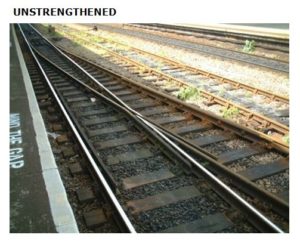
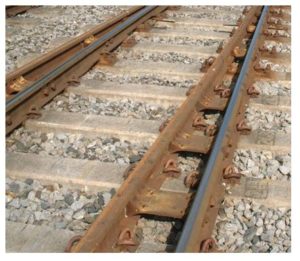
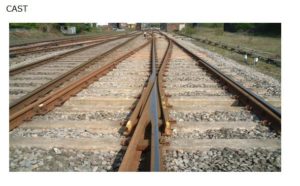
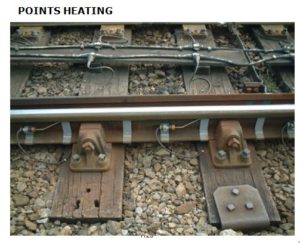
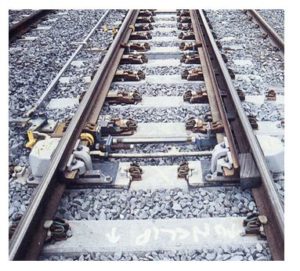
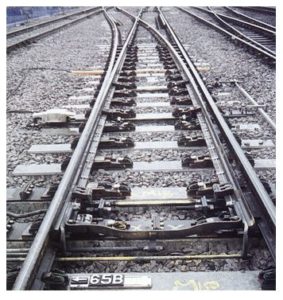
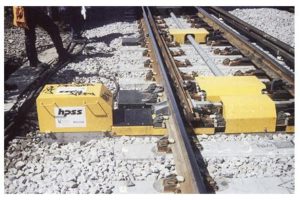
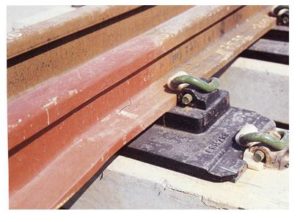
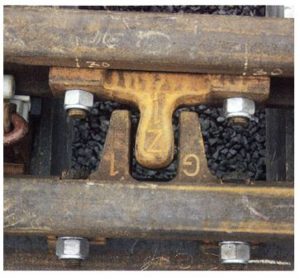
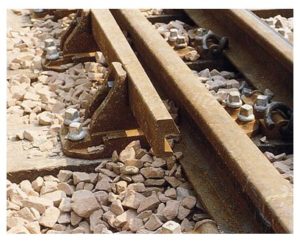
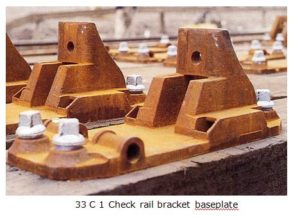
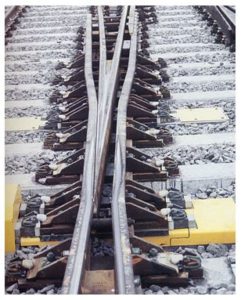
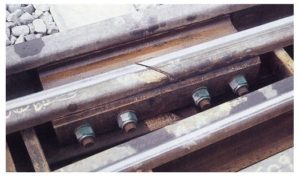
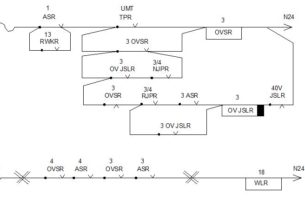
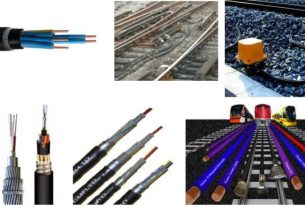
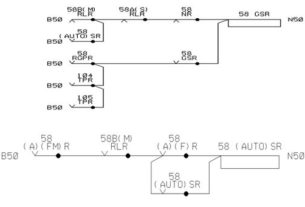
please send data on railway switch and signals
ok thanks
In South Africa a combined Facing Points Lock and Movement device known as a Butterfly FPL was used on rodding installations at a number of stations. Does anyone know about this and have illustrations/photos of the device. I used to have a photo of the ones used at Alcockspruit near Newcastle in Natal during 1960 but have lost it. Please send it to my E-mail address.
Point and crossing , check rail and crossing के साथ Turn out के प्रत्येक components को नाम और उसके चित्र के साथ बताने कि कृपा करें । धन्यवाद्
ok thanks